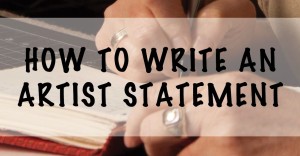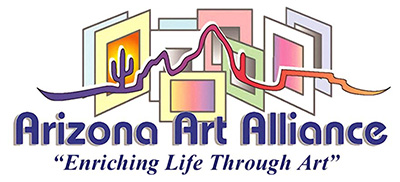 Writing your Artists Statement by H.E.A.R.T.
Writing your Artists Statement by H.E.A.R.T.
Writing an artist statement can be a daunting task. Knowing what to say about your work, your process, and your expression is not always easy and generally does not come naturally to most artists.
Every artist has a story to tell. What is your story? What story are you telling in your work? It is imperative to take time to reflect on your art-making practice. This is an opportunity to see yourself from a different perspective, to open your narrative and broaden the conversation between yourself, your work, and your audience. Your art practice is not just about the act of making art. It is important to articulate what motivates you, what inspires you and how, in turn, your work touches others. The artist statement is your opportunity to create a narrative around your art, your style and artistic practice.
To do this, you have to be willing to take a deep and honest look at yourself, your practice, and your art. The artist statement should include the following:
- History: identify the significant aspects of your personal history that informs your art or identity as an artist
- Emotions: realize the emotional response evoked by your work
- Aesthetic: look for a new way to understand your artistic process and aesthetic; learn to articulate the aesthetics of the work
- Reasons: understand your personal reasons for doing the work
- Technique: think about yourself, your art and your art making practice in a new way
- Themes: identify a common thread or theme in your work/body of work
Over and over, I hear artists say that they are not sure what to say when someone asks about their work. Because of this, I have compiled a list of questions to help artists move beyond the quicksand. Click here for the list of questions. I urge you to take the time to do this work. Answer the questions by free-writing or stream-of-consciousness writing. Fill the page/s with whatever comes up without concern for penmanship, spelling, or grammar. Once you have finished, then you can begin to revise and edit.
If you are actively engaged in making and showing your work, you should be writing a general artist statement, statements for each series, theme or body of work, and for the important or pivotal pieces.
TIPS:
- Your artist statement should be clear, concise, and to the point.
- Your artist statement should explain what your work is about, what inspires you, and what message you are trying to convey. Be specific and its ok to use concrete examples.
- Your artist statement should reflect your personality, your passion, and your unique perspective.
- Write in the First Person: Use your own voice but use your professional voice.
- Edit and revise: Go over it with a fine-tooth comb. Ask trusted friends, family, or colleagues to read your statement and provide feedback. This will help ensure that your statement is clear, concise, and effective without spelling or grammatical errors.
Remember that your artist statement is an important part of your overall brand and should reflect your style, vision, and values. Take the time to craft a statement/s that accurately represents who you are and what you stand for as an artist.
